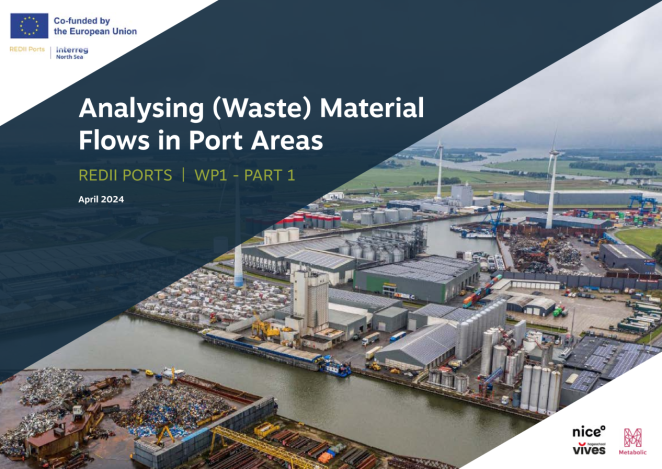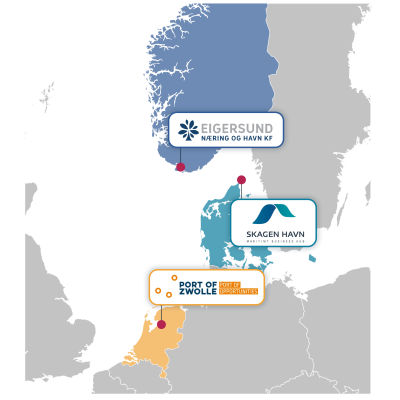
Partner(s)
Subcontracted
- Metabolic Consulting (for expertise material flow analysis)
Status
- report published April 2024 (Download here)
- other activities ongoing
Approach
Analyzing materials in port regions is crucial for understanding and reducing our impacts on the environment and transitioning towards more sustainable resource management. The aim of nice° in pilot 1, specifically involves mapping the excess material (or “waste”) flows within port areas to identify opportunities for more circular material usage. We do this in collaboration with our partner Metabolic for their expertise in data analysis and MFA.
The research has taken an integrated approach. Initially, the pilot aimed to identify only opportunities for using excess materials as (bio)fuel feedstock. However, the energy and material transition can not be solved in isolation as both are deeply interconnected in our economy and thus require a holistic approach. Therefore, we set out to identify opportunities to reduce the need for primary materials through sustainable usage of excess materials (“waste”). We used the material-usage hierarchy framework of Lansink to distinguish between the different R-strategies and retain the most value. In this way, priority can be given to higher R-strategies to valorize excess materials (Reduce, Reuse, or Refurbish). Next materials can be Recycled, which usually requires more energy and other resources to regain value. Finally, if materials are not suitable for this (anymore), energy can be recovered, possibly by using materials as a biofuel feedstock, or through incineration.
Activities
nice° is leading Pilot 1 and working in collaboration with VIVES and Metabolic. The following activities are carried out together as part of this pilot:
1. Material flow analysis for three case study port regions
- Duration: April 2023-April 2024
- Summary: Ports and their industrial hinterlands can play a key role in the transition towards more sustainable material and energy usage. This research aimed to identify opportunities for higher-value material utilisation by analysing material flows currently registered as “waste”. Three North-Sea ports were used as case studies: Port of Eigersund (Norway), Port of Skagen (Denmark), and Port of Zwolle (The Netherlands) (all three partners in the REDII Ports project).
- Report status: published.
2. Offering capacity-building workshops for the REDII Ports consortium to share knowledge and findings in relation to WP1
- Amongst others a workshop on the 7 pillars of the circular economy framework to stimulate holistic thinking about the sustainability transition
3. Create an implementation and a port strategy to use resources at its full potential
- More information on this will follow later in 2024
For more details, please contact:
Michiel De Meyere or Hanne Van den Berghe from VIVES
Fenna den Hartog or Annelies Lely from NICE
(For specifics on the Material Flow Analysis: Guillermo Dekker or Rianne Stelwagen from Metabolic)


